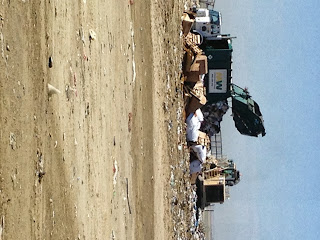Ever since it has become available, companies have used advertisements as a way to make customers buy their product instead of their competitors. A primary example of this is beer companies. They have adopted everything from memorable slogans to scantily clad women as the primary way to convince customers to buy their product. In between innings of baseball games, you are guaranteed to see an ad pop up on your TV telling you that this particular beer is colder, fresher, cleaner, lighter, manlier, tastier, or better than the next. It is interesting to see how these commercials are similar to those shown 20 years ago but they also show how certain things have become more socially acceptable. Being in Denver, CO, we chose to focus on two Coors ads from different time periods and analyze the similarities and differences as well as what the ads suggest about sustainability culture over the years.
The 1987 Coors ad has no people and displays only a can of beer which is poured into a glass. The newer ad shows a party with a broad social scene. The majority of people there have a beer in hand, but they all have glass bottles instead of cans. People are walking around and socializing, making the beer seem quite portable. In terms of sustainability, cans vs. bottles is a meaningful and currently debated topic. It seems like cans would have the edge because of how easily aluminum is recycled. That does help its case, but it takes much less resources to retrieve glass from the environment than for aluminum in the first place. There does not seem to be any clear cut winner here-which is why beer companies continue to produce their product in both types of containers. Rathje sees the disposable mind set as the biggest problem in our society. “Rather than a problem specific to landfills or other sanitation strategies, he says, this is a flaw in how manufacturers create and consumers use disposable products” (Humes 161). If this is the real problem, then bottles seem to have the edge. Many people don’t recycle their drink containers and, especially when intoxicated, tend to litter. So if these two products are scarcely being reused, then it would make sense to use the one which can be manufactured with less negative environmental impact. From studying these two commercials, it might appear that Coors has leaned toward bottles, but the sleek bottle is more flashy and appealing to customers. The newer commercial is more worried about portraying their product as a personality enhancer than one which is going to save global warming. But if the world can recycle at a higher rate as Rathje would desire, cans just might take the edge in sustainability.
In the twenty years between the 1987 and 2007 commercials, Coors holds true to the same values of brewing light beer with crisp mountain-fresh taste. The commercials open in similar fashions setting the scene in the Rocky Mountains. The 1987 advertisement submerges the viewer in a relaxed mood followed by singing in unison and the image of a flowing Coors poured into an iced mug while the 2007 version opens with upbeat music and guys hanging out drinking bottled beer, also in mountain scenery. In comparison of the two images Coors is emitting, the more modern promotes a party atmosphere where drinkers may be inclined to consume more while the 80’s commercial attaches an intimate feeling to the product. Honorably, it is apparent Coors operates on its original standards however the best things cannot always last forever, after indulging in the unique taste of Coors, the can or bottle is easily disposed and forgotten.
The availability of advertisement space has increased the amounts of ads out there and has changed the way people present their companies over the years. A good example of this is the way that Coors has changed its approach in gaining customers. We compared two ads, one from 1987 and one from 2007. In 1987, Coors focuses more on nature and the relaxing feeling that beer creates. The 2007 ad focuses more on how fun alcohol can be and depicts a party setting with girls and music. This follows the way that alcohol has been viewed over the years and the way that its reputation has changed. Companies such as Coors become successful with this strategy in knowing what the consumer wants and what they are looking for in a product.










